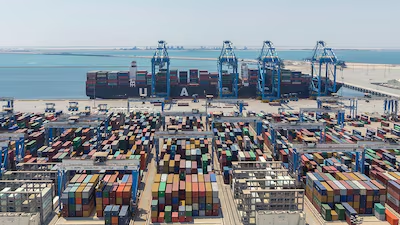
Khalifa Port in Abu Dhabi. Kizad’s green ammonia project will be powered by a solar plant. Abu Dhabi Ports
Khalifa Port in Abu Dhabi. Kizad’s green ammonia project will be powered by a solar plant. Abu Dhabi Ports
Abu Dhabi's Kizad to develop $1bn green ammonia plant
The project will be powered by an 800MW solar plant and will produce 200,000 tonnes of green ammonia

